The world’s second-largest naval exercise has concluded in the Middle East, involving Royal Navy vessels and personnel who showcased advanced technology and shared expertise with numerous allies.
All the UK’s Gulf-based ships, supported by expert dive/bomb disposal teams flown out from the UK, Royal Marines boarding and search specialists, drone operators and medics, were committed to the huge International Maritime Exercise.
The 18-day event, which took place across the Red Sea, Indian Ocean, and the Gulf, was considered second in size and scope only to the long-standing American naval exercise in the Pacific known as ‘RIMPAC’.
IMX involved more than 7,000 personnel from 50 countries, with approximately two dozen ships and an equal number of boarding and search teams. While the primary focus was on naval warfare, the Royal Air Force also provided aerial support from Cyprus. Participants addressed a variety of potential threats, including terrorism, smuggling, sea mines, and aerial drone attacks.
The exercise placed significant emphasis on the integration of remote and autonomous systems. The capabilities of existing equipment were tested, such as the operation of the Royal Navy’s dedicated crewless Puma drone by the 700X Naval Air Squadron, which served as a flying “spotter.”
You can read more on this here.


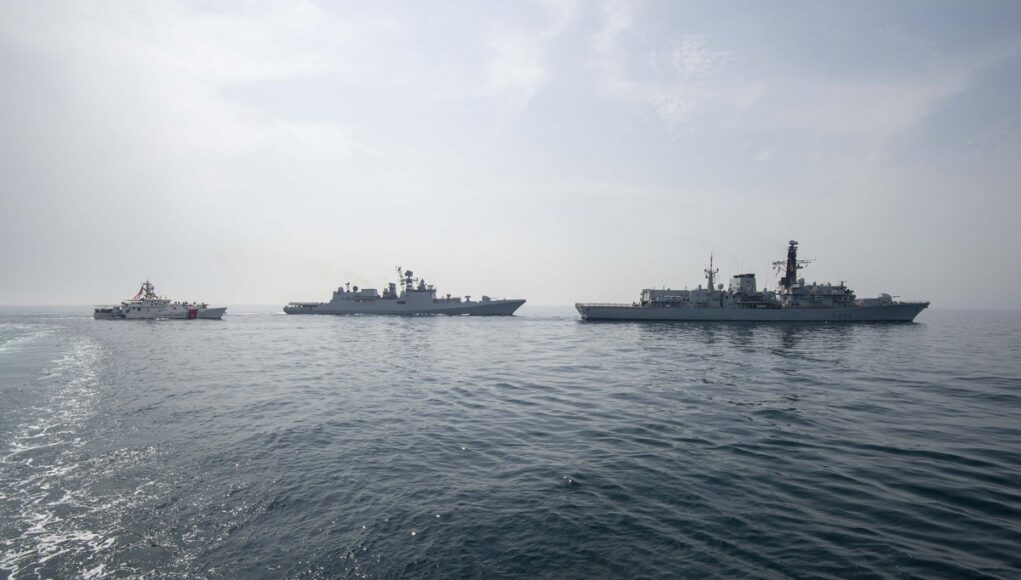
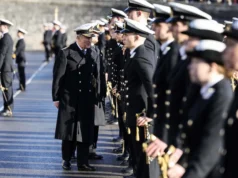

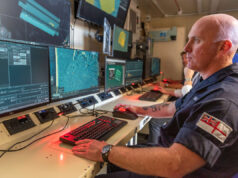
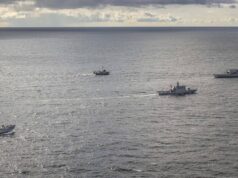


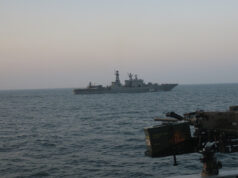
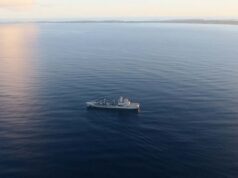



From the linked in RN article:
https://i.postimg.cc/hPSsysk8/Opera-Snapshot-2023-03-20-163207-www-royalnavy-mod-uk.png
That is the Aerovel’s Flexrotor tactical Unmanned Aerial Vehicle
Link for the above and following:
Flexrotor is an advanced Group 2-sized small tactical unmanned aerial system (STUAS) with vertical take-off and landing (VTOL) capability. It is being offered by Aerovel to the US and allied forces. Designed according to demanding reliability requirements of the US Department of Défense (DOD), the Flexrotor unmanned aerial vehicle can be used for a range of intelligence, surveillance, target acquisition and reconnaissance (ISTAR) missions both on land and at sea.
The Flexrotor unmanned system has an overall length of 2.1m, height of 1.7m, wingspan of 3m, and an empty weight of 14kg. It has two puller rotors with a rotor diameter of 1.85m. The complete aircraft can be assembled in 10 minutes by a maximum of two crew members while the setup time required for the base-equipment is nearly 15 minutes. Fitted with folding legs, the STUAS requires nominal support equipment and can be operated from confined spaces on land.
The long-endurance VTOL aircraft is equipped with Hood Technology’s Alticam steerable, zoomable imaging turret in its nose to perform search and target tracking as well as a survey while recording HD imagery onboard for post-flight review. The turret integrates daylight or infrared camera for day and night imaging and data-gathering.
Payload options for Flexrotor include meteorological sounding, atmospheric boundary-layer flux measurement, geomagnetic, radar and multispectral imaging, and communications relay. The unmanned aircraft is capable of transmitting NTSC/PAL-quality video to operator’s station over a range of 100km. The imagery and video can be sent to nearby users such as firefighter on-scene and can be viewed on an iPhone.
Flexrotor is powered by a two-stroke 28cc engine. With a maximum launch weight of 23.5kg, the aircraft can hold up to 4.2kg of fuel. The wing-borne and thrust-borne flight speeds of the aircraft are 180km/h and 45km/h respectively. It has a loiter speed of 80km/h and a service ceiling of 7km. The unmanned aircraft offers a maximum endurance of 33 hours with 1.5kg payload by using external fuel.
Ah found it, it was/is based on the USS Paul Hamilton :
https://i.postimg.cc/yd58tLdf/Opera-Snapshot-2023-03-20-170927-www-dvidshub-net.png
Reminiscent of the CL227/327 or flying peanut as it was better known.
Normally a single “rotor” that is used for vertical take-off and landing causes a torque reaction that spins the body. However, looking at the wing tips, there are two small propeller blades. I’m presuming these are used for both anti-torque and also hover movement.
That’s pretty cool. When you take the pilot out, tail sitters can actually work.
I didn’t even see the wings in the first pick and was thinking why put the sensors in the nose, they would be pointing at the sky
Apropos of nothing:
https://i.imgur.com/fLtvk6n.jpg
HMS Queen Elizabeth is a frigate? Fregatte ist nicht gleich Fregatte… nevertheless!
After 4 years of German at school I can understand absolutely nothing of this.
I will go out on a limb and guess that fregatte is frigate
Across the top:
Doctrine Purist: A Frigate is used to fight other Navies Warships.
Doctrine Neutral: A Frigate is used by the Navy.
Doctrine Radical: A Frigate is used to cross water.
Down the side:
Design Purist: A Frigate is a Multipurpose Surface Warship
Design Neutral: A Frigate is a Armed Ship.
Design Radical: A Frigate is a Ship.
Persian gulf
Happy New year 🎉
What am I missing. It’s the middle of March?
Persian new year is the 20th March. Which coincides with the spring equinox..so it’s actually a really sensible time to have the new year.
One For the Trolls to swallow and no doubt report back.
Enjoy the spring, it’s almost upon us!
“More than a dozen European Union member states have agreed to supply Ukraine with at least one million artillery shells over the next year.
The plan, worth €2bn in total, was agreed in Brussels on Monday.”
LINK
Thank goodness for brexit, or it might of been 1.1m EU shells😂😂😂
When it comes to defence, we don’t seem to be shelling out enough😂
Nigel, I don’t think you will get a knighthood for your humour but you might be canonised….
😆
Haha
Also in the news I read about the 2 year delay to the Ajax program that involved fitting thicker cushions for the soldiers and dual noice canceling headphones. Doesn’t seem like they managed to fix the actual issue, which is worrying.
How is something that makes that level of noise going to be good at scouting.
I posted this at the time, is it a fix or a bodge to save faces?
One for the experts on here if this is in fact the case.
Ben Wallace is quoted as saying that Ajax has turned a corner, so I guess that’s a positive sign!
“The latest version of Ajax includes heavier density foam in the front seats and control joysticks – used to aim Ajax’s 40mm cannon – which are no longer fixed to the hull.
The addition of rubber seals between the joysticks and Ajax’s metal frame has drastically reduced the vibrations.
For the first time, troops are also issued two pairs of ear defenders, a standard ‘Crew guard’ defender over their ears and a tiny inner-ear protector made of rubber.
The latter is rolled between finger and thumb by the user, to produce a custom fit, then pushed down inside the ear’s external auditory canal.
Army sources told the Mail they expect Ajax vehicles to be rolled out to armoured regiments later this year
.
The vehicle will also undergo a further 18 months of testing so that any additional changes can be made.
Eventually, 589 Ajax will enter service, hopefully ending years of controversy.
Six variants of the vehicles are being assembled by General Dynamics UK at their factory in Merthyr Tydfil.”
LINK
I’m no expert but isn’t rubber seals another way of saying extra padding, to reduce the impact on the troops but doesn’t change the underlying cause which I assume is making the noise. Hopefully we will have a proper review of what went wrong at some point so we can understand if this was a fudge job to save face or if it really makes the platform viable.
Equally important is the type of rubber that has been used.
LINK
At its core it’s an overweight truck, the car industry has known for years how to dampen down vibrations to make smooth rides. We aren’t taking rocket science here, it’s a big engine on a heavy platform. There are only so many places serious vibrations can be coming from and surely that can be identified very quickly. I assume it has to be a fundamental problem with the design that would involve rebuilding all the ones already partially built, and I assume it’s at least part down to the government or they would just require the manufacturer to rebuild at their own cost.
I don’t buy it took 2 years to come up with rubber seals (properties of rubber are known, so any decent material scientist could identify the right one in an afternoon) and ear protectors. Whilst I truth Ben Wallace, as he seems genuine with his approach, I can’t help thinking his hands were tied, for some unknown reason. Unless there is an independent enquiry (unlikely) I doubt we will ever find out.
Slightly off topic but another type 23 has just been retired(Argyle?) which represents a further reduction in the front line escort fleet(to 17?) I thought the plan was to retain the 23’s for as long as it took and replace on a one for one basis with the 26 and 31. At this rate the available fleet of 45’s and 23’s is heading down to single figures!!
Argyll is in the Frigate Support Centre in Devonport undergoing work that will see her serving until around 2027-28 when she will effectively be replaced by either HMS Glasgow (the first Type 26) or HMS Venturer (the first Type 31).17 Aug 2022
Thanks for that-so it wasn’t Argyle but one other 23 has just been retired so that is a net loss to the current fleet
HMS Montrose is about to be decommisioned after retutning from the Gulf. Some big thank you for all her service!
Thanks MCH